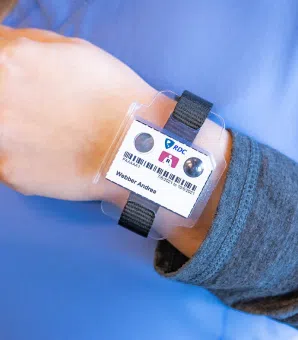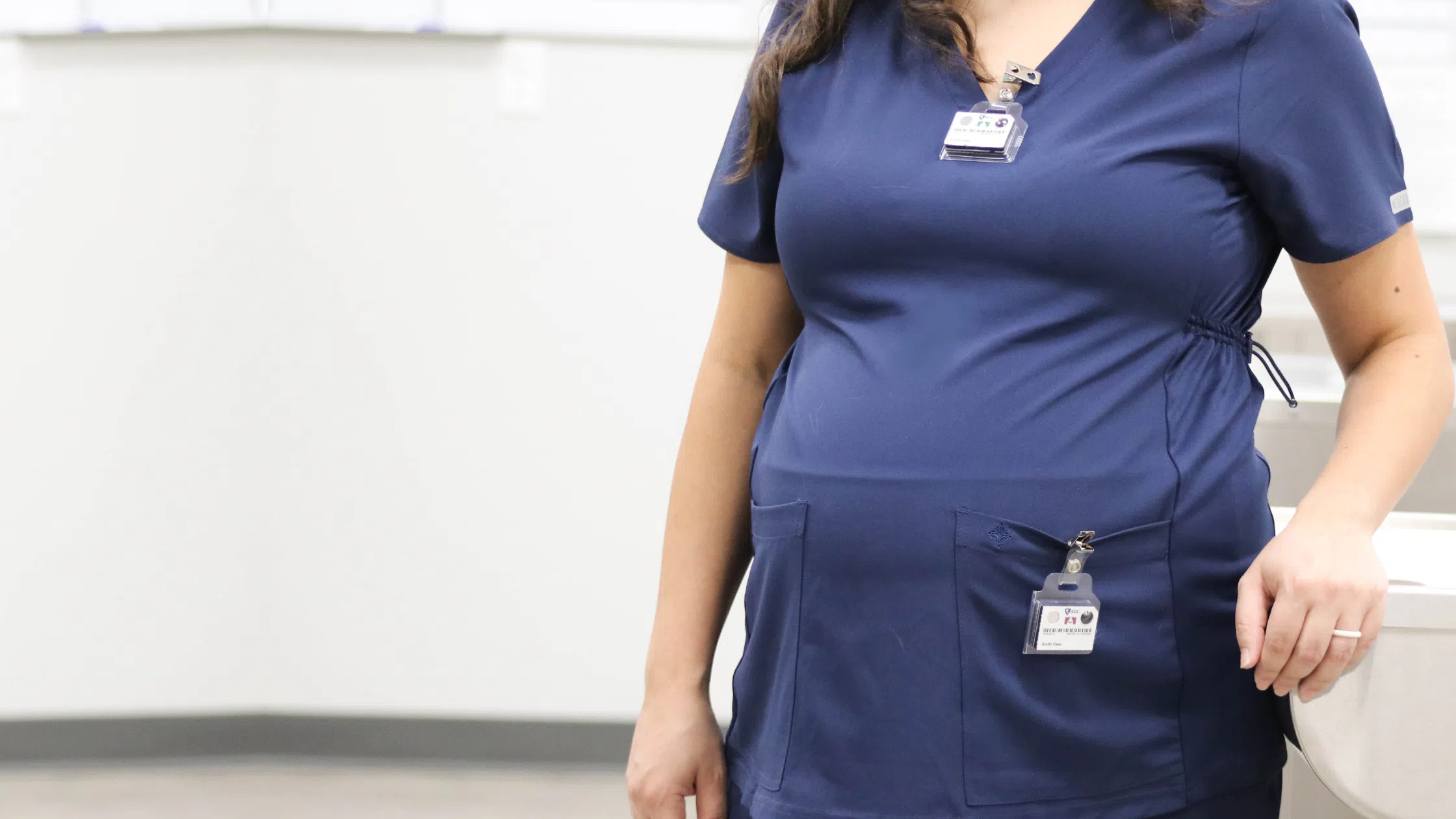
Dosimeter badge services for medical, dental, and veterinary businesses
Learn how Radiation Detection Company’s easy-to-use dosimetry solutions can boost the efficiency of your practice.

If you are pregnant or planning to become pregnant, understanding the dangers of radiation exposure is very important.
It's recommended you discuss any questions or concerns with your doctor. Also, be sure to always inform a health professional that you are pregnant before having any medical imaging performed. Precautions must be adhered to when dealing with pregnancy and medical radiation as well as occupational radiation.
We hope you find this article informative, and as always, we look forward to hearing your feedback!
The most common ways that a pregnant woman can be exposed to radiation are undergoing diagnostic imaging (for example x-rays), radiation therapy (generally used as a treatment for cancer), or an occupational exposure within regulatory limits.
Diagnostic imaging and occupational exposure within regulatory limits are not likely to cause any health effects for a fetus. While radiation therapy is known to have negative effects during pregnancy.
There are also circumstances where accidental or intentional exposure above regulatory limits can be cause for concern.
The general principle for imaging during pregnancy is similar to imaging for the general population, with the goal of radiation exposure being as low as reasonably achievable (ALARA).
To learn more about the principles of radiation safety, please refer to our recent blog. "Radiation Safety Programs: A Comprehensive Guide."

The potential health effects to a fetus from prenatal radiation exposure mostly depend on the radiation dose.
Though the human embryo and fetus are sensitive to ionizing radiation doses greater than 0.1 gray (Gy), the fetal radiation dose tends to be lower than the radiation dose to the mother. This is due to protection provided by the uterus and surrounding tissues.
Depending on the development stage of the fetus, the health consequences of exposure to a significant radiation dose greater than 0.5 Gy can be severe. This is true even if the dose is too low to cause an immediate effect for the mother.
The health effects can include growth restriction, malformations, impaired brain function, and even cancer.
Estimating the radiation dose to the fetus requires considering both external and internal (to the mother’s body) sources, including the below:
In most cases, radioactive substances that reach the mother’s blood will be detected in the blood of the fetus. The concentration of the substance depends on its specific properties and the development stage of the fetus.
A few substances needed for fetal growth and development - for example iodine - can have higher concentrations in the fetus than in the maternal tissue.
Radiation doses to occupationally exposed staff working with radiological equipment are generally low. It's unlikely that the equivalent dose limit will be approached.
Exposing the embryo or fetus to ionizing radiation carries a risk of causing adverse health effects. (Such as cancer and developmental abnormalities).
For this reason, the National Council on Radiation Protection and Measurement (NCRP) has created recommendations detailing that the total dose equivalent to the embryo/fetus from occupational radiation exposure of the expectant mother not to exceed 500 mrem (NCRP Report No. 53) throughout the entire gestation period.
Also, once the pregnancy is known, exposure of the embryo/fetus should not exceed 50 mrem in any month (NCRP No. 91) during the gestation period.
The first responsibility lies with the pregnant woman herself, who voluntarily notifies her pregnancy to radiation safety at her company as soon as the pregnancy is confirmed.
After a radiation worker informs her company of her pregnancy, the first step is to implement the fetal dose limit. Then there are three options that are usually considered in radiation facilities:
There is no single correct answer for all situations. In certain countries there may be specific regulations that must be followed. Ideally the organization will have a discussion with the employee to discuss the best course of action. During this conversation, the worker should be informed of the potential risks, local policies, and recommended dose limits.
For some fluoroscopic examinations - an imaging technique which uses x-rays to obtain real-time moving images to create a video of the movements inside part of the body - there is the potential for higher occupational radiation exposure. In interventional radiology procedures, extended fluoroscopy times in addition to the use of certain radiological equipment (such as lead rubber protective curtains) can lead to certain concerns in radiation protection.
Fetal monitors are available for pregnant radiation workers to ensure the fetus does not exceed 500 mrem for the entire gestational period or 50 mrem a month.
Pregnant employees should wear badges close to the embryo/fetus to obtain the most accurate dose.

Fetal Monitors are available for pregnant workers, who have declared their pregnancy, to ensure the fetus does not exceed 500 mrem for the entire gestational period or 50 mrem a month. The badge should be worn close to the embryo/fetus to obtain the most accurate dose.
Radiation Detection Company offers TLD, OSL, and digital fetal monitoring solutions.
Explore our fetal monitoring badges here.
Radiation Detection Company is dedicated to keeping you and all your employees safe.
We have 75 years of experience providing quality dosimetry service to over 40,000 companies nationwide.
Want to take the next step in getting your organization set up with RDC’s radiation safety products? Please visit our Solutions page to view our full suite of offerings.
We offer a wide range of affordable and comprehensive solutions to fit the needs of any organization, large or small.
Have a question that we did not address in this article? Please reach out to our Customer Care team, and one of our specialists will be happy to assist you.
Learn how Radiation Detection Company’s easy-to-use dosimetry solutions can boost the efficiency of your practice.